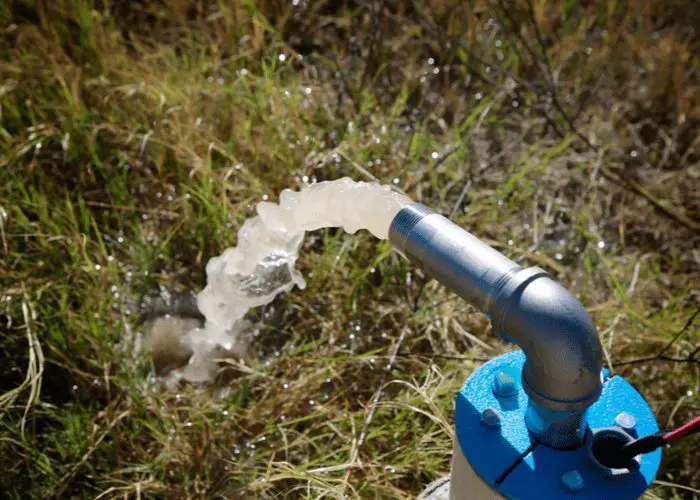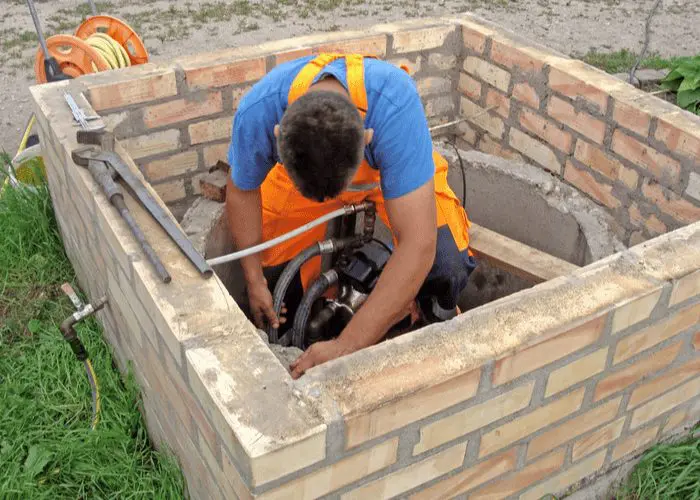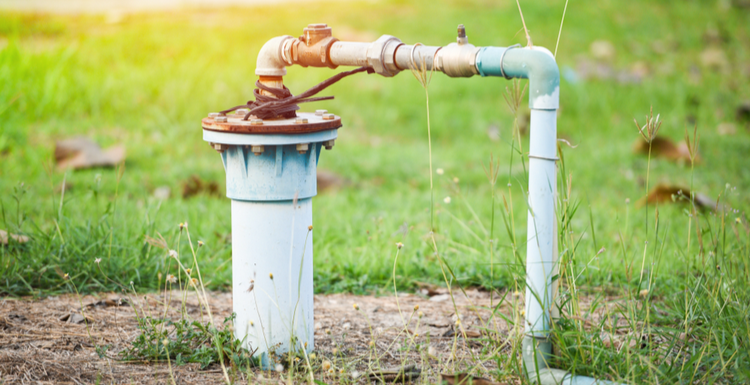For your well pump to function correctly, you need to prime it.
But what does that mean, and how do you do it? Find answers to these questions and more below.
Read on to learn all you need to know.
What Does Priming Mean?

GSPhotography/Shutterstock
In the simplest terms, the word priming means preparing something for operation.
Priming your well pump is the process of creating a vacuum-like pressure that sucks the water up from the well to all of your water source lines.
Usually, you will only have to prime your well pump when the pump is first installed; once primed, the pressure remains in the lines.
You will only need to re-prime your well pump if something malfunctions or breaks.
When You Don’t Have to Prime a Well Pump
There are two types of basic well pumps: submersible and non-submersible.
The only time you do not need to prime a well pump is if you have a self-priming well pump.
Submersible well pumps work best for deep wells since they operate underwater with the power source located at the top of the well.
Since the pump is fully submerged, it does not have to be primed.
In contrast, non-submersible well pumps work best with shallow wells and need to be primed to work since they are located outside the water source.
How to Prime Your Well Pump
To learn how to prime a well pump, just follow these simple instructions.
This guide is for non-submersible well pumps, as submersible well pumps don’t require priming.
- Before you begin priming, check for cracks, leaks, and damage to your well pump. This helps you catch any obvious problems and avoid causing damage to your pump.
- After checking for damage, shut off the power source for your well and make sure the pump is fully disconnected.
- Next, remove the priming plug. You can usually find the priming plug at the top of the pump in a hexagon or square shape. If the plug is not on top, try checking your pump’s manual; these can almost always be found online.
- After removing the priming plug, locate and open the release valves. This step prevents any pressure from building up in the pipes.
- Next, grab your water hose and attach it to the hole where the priming plug used to be. It should be fairly easy to attach and screw on, like a regular garden hose.
- Turn on the water. Allow the pump casing to fill up with water; you will know when it is full when the casing begins to overflow from the priming plug and release valves.
- Finally, put the priming plug back into place and turn the power back on (reconnect to the power source if you’ve disconnected it).
An important thing to note for this step is that you must prime your well pump with the water you intend to use.
For example, if you plan to drink this water from a shallow well, you will have to connect a hose with clean drinking water to fill the tank.
Frequently Asked Questions

Grandpa/Shutterstock
When should I prime my well pump?
Your well pump needs to be primed upon initial installation, and then it shouldn’t need to be re-primed unless there is damage or malfunction to the pump over time.
If you have a self-priming pump or a submersible pump, it does not need to be primed.
How much does it cost to prime a well pump?
If you can learn to do it yourself, priming a well pump will cost nothing. It can cost anywhere from approximately 1000 to 2000 dollars to fully replace a well pump.
How do I keep my well pump primed?
A well pump only needs to be primed upon installation, and from there on, it will remain primed unless the pump has any damage or malfunctions.
What is a convertible jet pump?
A convertible jet pump is a well pump that draws water from extremely deep wells, some over 90 feet deep. They have an extra pipe, so one is used for water suction.
The other pushes water towards your outlet valve. When you prime a convertible jet pump, the only difference is both pipes need to be filled with water, as explained above in steps five and six.
How much water is needed to prime a well pump?
An important question you might be wondering when you are about to prime your well pump is how much water is actually needed to complete the priming process.
Ideally, you want about a gallon or two for priming your water pump. This can depend on how deep or shallow the well is and if there is any existing water pressure in the lines.
Keep in mind if you are planning to drink from this well, you will need a gallon or two of clean drinking water for the priming process.
What causes a pump to lose its prime?
When you prime a well pump, you should usually only have to do the process once the pump is initially installed. However, over time there are a few things that can cause your pump to lose its prime.
For example, if your pump’s intake line or shaft seal leaks, this could result in your pump system losing its prime. Another common reason that your well pump might lose its prime is from a blockage or obstruction in the pipes.
Debris can build up in the suction strainer or foot valve, which can affect the water pressure; this is the most common reason why a well pump system could possibly lose its prime.

